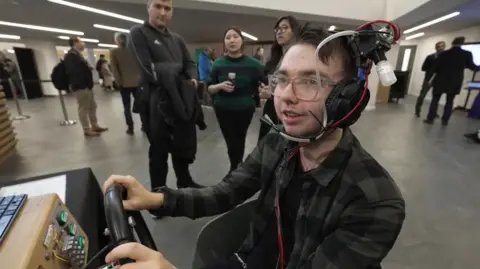
Modern video games look and sound more realistic than ever before.
However, there's one sense developers haven't tapped into yet—smell.
Imagine playing as Mario, twirling through the Mushroom Kingdom, and catching the scent of a Fire Flower power-up.
Or entering a hallway in The Last of Us filled with Clickers—the deadly enemies mutated by a world-ending fungal pandemic.
James, a member of the Nuneaton Nitros esports team, says he's curious about some of those unusual smells.
"I can definitely say I've wanted to smell things in Call of Duty," says James, who also wonders about the scent of aliens in Warhammer: Space Marine 2.
But he admits they might be "pretty grim."
Gamers like him are currently being used to explore a question—can smelling a game make it more immersive and improve your gameplay?
The Legend of Smell-da
That's what researchers demonstrating experimental technology at Warwick University's Festival of Innovation hope to discover.
They've created a custom headset that delivers tiny doses of scent through a tube, dispersed by a fan in front of the player.
Developed with Hollywood Gaming, it uses bottles of essential oils to mimic a variety of aromas.
BBC Newsbeat tested it with the arcade classic Daytona Racing.
When we tried it, the strong smell of petrol filled the air as we raced around the track.
Hit the brakes, and you suddenly get a whiff of plasticky rubber. You also catch a faint "new car smell" while playing.
As anyone who's had a wet dog in their house knows, it's not easy to get rid of a smell once it's there.
According to the researchers, the real challenge is quickly switching between scents as a game progresses.
This can be especially tricky when transitioning between two contrasting scenes, like a flashback from a post-apocalyptic scene to a pre-doomsday memory.
Previous technologies, like the infamous smell-o-vision, struggled with this issue, but the researchers believe their "micro-dosing" method will solve it.
